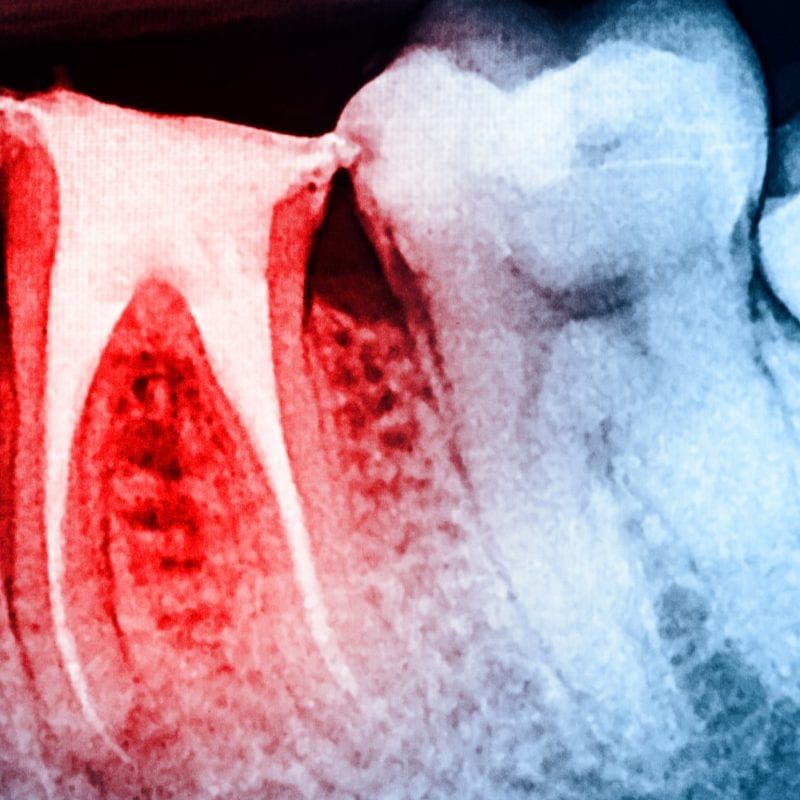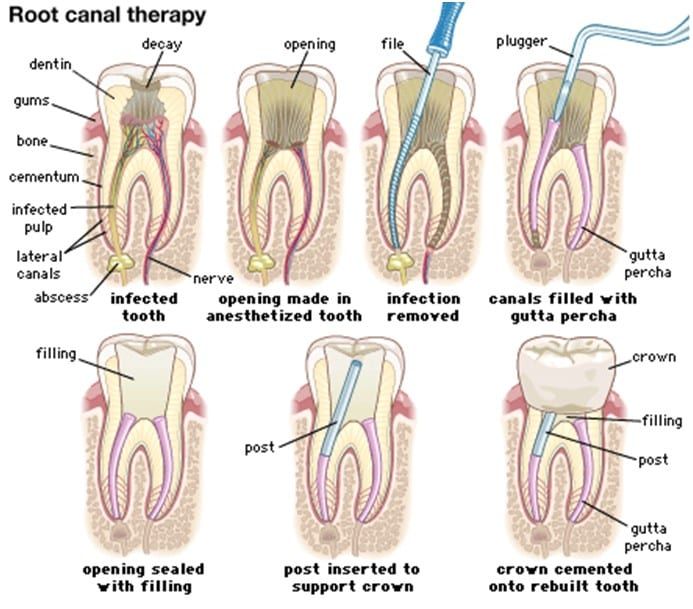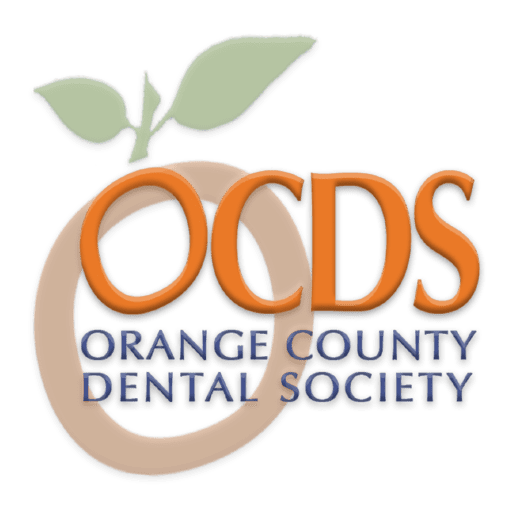One essential part of receiving effective endodontic treatment is complete and thorough irrigation of the treatment site. This process pushes liquid to the treatment site to flush out debris and infection during the cleaning process. The more effective the equipment involved, the more thoroughly that the bacteria and infection can be removed, reducing post-treatment complications. For years the general approach has been using rotary instruments (such as the dental drill) and other instruments. While effective, they also had a tendency to produce less favorable outcomes than irrigation. Today irrigation is the go-to solution for cleaning a treatment site of bacteria and debris. The result has been better, more effective cleanings with reduced complications.
Chemical Agents Most Often Used In Endodontics
Eliminating the presence and growth of bacteria within the root canals has involved several irrigation systems. Each of them is part of an important role in effectively disinfecting the area so that future treatments can move forward safely. The ideal system for irrigation begins with being non-toxic and non-allergenic. The elements involved should be antimicrobial while having the capacity of dissolving pulp tissues endotoxins. Finally, they should be able to slow or stop bacteria formation. These criteria have led to the creation and introduction of several irrigation agents that are used in dental practices. Consider each of the following and their pros and cons:
- NaOCL: Sodium hypochlorite is one of the dental and endodontic industries’ gold standard agents. It has the ability to remove pulp tissue and destroy bacteria. However, it has the drawback of eliminating both dead, or necrotic, pulp tissue as well as vital living pulp. While removing dead tissue is essential for eliminating the ability of bacteria to reproduce, it makes it difficult to preserve healthy tissue in the tooth. Regardless, its ability to break down bacterial biofilms, such as plaque and interfere with its cellular processes are hugely beneficial. Its cytotoxic nature means that accidents can occur. It also only works for a short duration, which is a benefit and a drawback, as it requires frequent reapplication to be effective.
- EDTA: Ethylenediaminetetraacetic acid, also referred to as EDTA, is used in conjunction with NaOCL. It has the ability to remove demineralized dentin and calcium. It is also an effective lubricant and, in certain applications, can help remove biofilms like plaque and tartar within the canal. It can even be left within the canal to kill off bacteria. There is some concern about how NaOCL and EDTA interact that dentists have to weigh against the benefits.
- CHX: This substance falls third in line in terms of commonly used irrigants. Chlorhexidine gluconate has antiseptic properties capable of rupturing bacterial cellular walls by interfering with its phospholipids, causing cell death. It has the significant benefit of binding to dentin, resulting in a prolonged release of antimicrobial action over a period of months. This is one advantage that it has over NaOCL. However, while this advantage is significant, it can’t dissolve necrotic pulp tissue, break down biofilm, or remove smear layers. This makes it a common choice for secondary irrigation at the completion of the procedure. However, it can’t be used in conjunction with NaOCL as it can affect the anatomy of the canal and prevent obturation, sealing the canal.
Each of these irrigation agents come with their own advantages and disadvantages. They only represent a portion of the irrigation systems used in endodontic practices. Another important aspect of these treatments is the techniques used. Endodontic science has worked to advance the processes used to ensure the best possible effects.
Below we’ll touch on a few of these techniques and how they’ll change up.
Mastering Endodontics Via Specialized Irrigation Techniques
Combining the most effective chemical irrigation agents with the proper mechanical processes can result in highly successful root canal irrigation. This combination of elements is frequently used due to its lack of requirement for specialized devices. It also provides the endodontist with a reasonable way to manage canal depth and irrigant flow to the site. Using a combination of open/closed-end cannulas and syringes is key to the standard technique used by most endodontists.
To most effectively address the issues faced during endodontic treatments, the following systems have been introduced:
- Passive Ultrasonic Irrigation: This method was introduced to boost the effectiveness of canal cleaning methods. It accomplishes this by stimulating the chemical agent with ultrasonic waves. This process allows the agent to move laterally within the canal, removing irregularities through a process called acoustic microstreaming. This allows the solution to access areas that have remained untouched by rotary instruments. The enhanced penetration of lateral canals is superior to that possible using a cannula and syringe.
- Intermittent Passive Ultrasonic Irrigation: Another method utilizing ultrasonic waves to enhance the results. In this version, the canal is initially filled with an irrigation solution with the standard cannula and syringe. An ultrasonic tip is then used to stimulate the agent, activating it. It remains a more manual irrigation method, as instruments are still used to exchange the liquid within the canal and eliminate organic tissue.
- Continuous Passive Ultrasonic Irrigation: The CPUI process utilizes acoustic microstreaming in an ongoing stream rather than intermittent pulses. Rather than using traditional methods, a uniquely designed irrigation tip permits the solution to be consistently dispensed. This allows greater control over the amount of irrigant that’s involved in the procedure. It also promotes more thorough degradation of the bacteria and dissolution of tissue than other methods. CPUI is often used to help address issues frequently faced with other manual approaches.
One thing that all these methods share is the use of chemical agents within the canal system. These agents are formulated to eliminate the unwanted tissues and prepare the tooth for being filled and sealed without risk of future infection. Taking control of the amounts of fluids used helps avoid any potential problems that may occur with the periapical tissues. This is why methods like these are essential to ensuring successful treatment and the patient’s safety. If you’re eager to learn more about these processes, contact your endodontist today.






